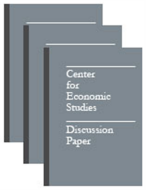Downward Nominal Wage Rigidity in the United States: New Evidence from Worker-Firm Linked Data
Downward Nominal Wage Rigidity in the United States: New Evidence from Worker-Firm Linked Data
Abstract
This paper examines the extent and consequences of Downward Nominal Wage Rigidity (DNWR) using administrative worker-firm linked data from the Longitudinal Employer Household Dynamics (LEHD) program for a large representative U.S. state. Prior to the Great Recession, only 7-8% of job stayers are paid the same nominal hourly wage rate as one year earlier - substantially less than previously found in survey-based data - and about 20% of job stayers experience a wage cut. During the Great Recession, the incidence of wage cuts increases to 30%, followed by a large rise in the proportion of wage freezes to 16% as the economy recovers. Total earnings of job stayers exhibit even fewer zero changes and a larger incidence of reductions than hourly wage rates, due to systematic variations in hours worked. The results are consistent with concurrent findings in the literature that reductions in base pay are exceedingly rare but that firms use different forms of non-base pay and variations in hours worked to flexibilize labor cost. We then exploit the worker-firm link of the LEHD and find that during the Great Recession, firms with indicators of DNWR reduced employment by about 1.2% more per year. This negative effect is driven by significantly lower hiring rates and persists into the recovery. Our results suggest that despite the relatively large incidence of wage cuts in the aggregate, DNWR has sizable allocative consequences.
Others in Series
Working Paper
Working Paper
Working Paper




